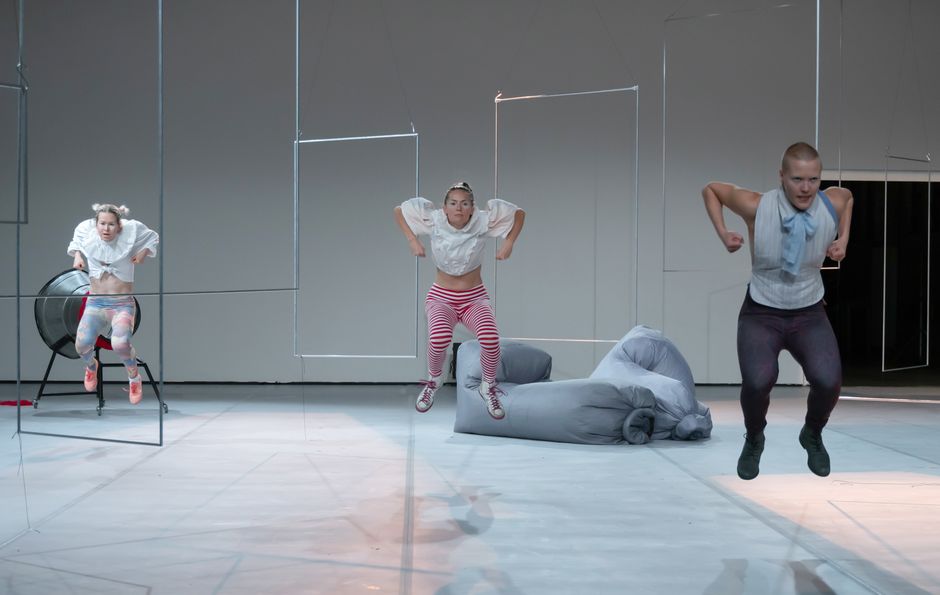Choreography, Dance, Research, Curating
Professional fields for consideration by graduates
Studying at the HZT opens many doors. This becomes clear when you look at how many career paths our graduates have taken, as well as the different areas and roles they work in as artists. More than 95 percent work continuously in the artistic field after completing their studies. They work, for example, as choreographers, dancers, dramatic advisers or production managers. They are also often involved in interdisciplinary collaborations in which contemporary dance, choreography and performance encounter the visual arts, music, media art, literature, and various academic areas. Many graduates curate series and festivals, work with galleries and museums, while others specialise in lighting and stage design. What is more, HZT graduates are engaged in cultural education and communication projects, or they enter into the international field of research and gain PhDs.
Choreographies for theatre and the urban space
Alica Minar, MA graduate in Choreography, initially studied Mathematics in Prague before being drawn to dance. She creates choreographies that are interdisciplinary and context-related for theatre spaces and urban locations. Her purpose is to explore pressing societal topics and to dissect these together with the audience. In her choreographies, Alice Minar seeks out the humour and poetry that emerge out of bizarre situations, and for this she develops a strong imagery that brings together abstraction and narration. In her “Explosion” for four dancers, Alice Minar creates a humorous world made up of furious bodies in a battle with bizarre objects in the space. A fairy-tale-like jagged world of images arises from this collision of dancers and objects with one another.
Artistic research
Kiraṇ Kumār is among the growing group of HZT graduates whose artistic and choreographic work is made possible by research scholarships and PhD grants in Germany and abroad. In his installation “Six Uneasy Fragments (exactly) About the Natural And Spiritual”, Kiraṇ Kumār overwrites texts by Alan Turing with drawings and dance. Rooted in Hatha Yoga, Kalaripayattu and Indian temple dance, he explores these physical practices and their cosmologies through media such as performance, video, installation, archiving and an explorative writing praxis. Kiraṇ Kumār’s work was made possible, among other things, by the multi-year “Arts and Science in Motion” research grant from the Volkswagen Foundation, the “Research Grant” of the National Arts Council Singapore, and the “Crossing Borders Research Grant” of the Robert Bosch Foundation and the Literary Colloquium Berlin.
Collaboration and inclusion
The collaborative choreographic praxis between Julia Keren Turbahn and Jan Rozman emerged from their encounter at the HZT, where current topics in society such as inclusion and diversity are further developed together with the students and teaching staff. In the philosophical dance performance “Dinge Dingen”, Julia Keren Turbahn and Jan Rozman attempt to change the way we think through movement. What can we do when furniture, crockery, cleaning implements, emotions disappear? How should we behave when we forget what they are used for, and we are forced to fill the empty space with alternatives? The production “Dinge Dingen” came into being as part of a two-year residency grant in 2020/21 at the FELD Theater for young audiences in Berlin, and has also been performed since 2022 in sign language with the hearing-impaired performer Jan Kress. In 2021, the work – which has performed regularly at festivals in Berlin and Europe – received the special jury prize at the 11th Biennial of Puppet Artists of Slovenia for its “playful critique of (un)useful plastic objects”.


